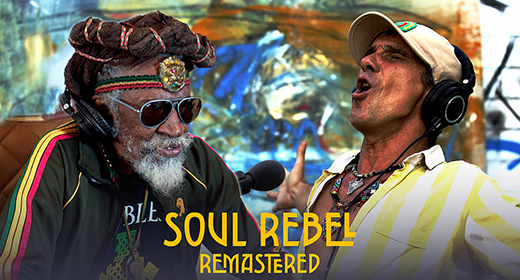Good balance is essential for everyone. It helps keep you from falling. And, allows you to react and recover quickly during times when you happen to slip or take a misstep…
As we get older, maintaining proper balance and stability becomes even more critical. That’s because we’re not as limber and agile as we used to be when we were younger.
Also, taking a fall puts us at the bigger risk of fracture.
If you’re an athlete, you’ll also know how important balance and coordination is for performance. More importantly, they keep you away from injury.
Because yoga includes so many poses that put you in unstable situations, it’s great for anyone who wants to improve their balance.
What may come as a surprise is that many of the balance poses don’t require standing on one leg.
Here are the best yoga poses for any beginner who wants to improve their balance.
For more, advanced poses, we suggest heading over to our article here. It involves more complex asanas that not only challenge you but also help improve your strength and flexibility.
Beginner Yoga Poses for Balance
1. Mountain Pose
We begin our list of yoga for balance poses with the mountain pose. This is a standing pose that’s great for improving posture.
While it isn’t as popular as other asanas, this pose is very useful for improving balance as it helps you find proper alignment.
It does so by letting you visualize that imaginary plumb line running straight down from the top of your head to your heels.
This lets you check your body’s alignment while helping your mind and body calm down to get ready for your yoga session.
Hold the mountain pose for 5 to 8 breaths.
2. Chair Pose
From the mountain pose, we transition to the chair pose.
This pose requires a bit more leg and core work. It is great for improving overall stability since it requires you to rely on your feet, ankles and legs for balance.
When performing this pose, make sure to protect your knees.
To do this, always check by looking down. Make sure that both knees don’t go past your toes. This reduces the strain, so you don’t feel any discomfort or pain while holding the pose.
Finally, bringing your arms up and holding over your head also adds a bit of difficulty to the core and lower body balance.
Hold this position for 5 to 8 breaths before gentling coming back up.
3. Tree Pose
The tree pose is the first asana in our list where you’ll need to rely on one leg for balance.
Balancing on a single limb is harder than with two feet because you need to stabilize your body weight on a smaller base.
We love the tree pose because if forces each of your legs to work individually. Unlike the mountain pose, this ensures that one leg isn’t compensating for the weaker leg.
In doing so, you’ll be able to fix structural and postural imbalances. Both of which increase your risk of falls and injury.
When starting out with the tree pose, you can stand in front of a wall. This helps offer some security. And, you’ll have something to brace against when you feel unsteady.
Like the two poses above, start by holding the tree pose for 5 to 8 breaths. Make sure to do both sides.
You can likewise do your weaker side longer or a second repetition to help improve its balance faster.
4. Eagle Pose
The eagle pose builds on the tree pose.
It is more challenging than the tree pose because you need to wrap your arms and leg in front of you. Thus, it requires more focus and flexibility in addition to balancing yourself.
Because the eagle pose is a balancing posture, it helps work your hips, legs, butt and core. The arm extension also helps stretch out your shoulders and upper back.
Since all your weight is placed on one leg, we don’t recommend this pose for anyone who has a current knee injury.
Also, if you want to do this pose while pregnant, we suggest having a chair, wall or partner beside you for assistance.
Hold this pose for 5 to 8 breaths making sure to switch sides.
5. Warrior I
The warrior pose is one of the most recognizable yoga poses around.
But, don’t let its simplicity fool you.
The warrior pose is an empowering pose that has a few intricate details to consider.
- One is making sure that your hips face forward. As a guide, try to keep them parallel with the front side of your mat.
- Another important note is to keep the heel of your back foot on the floor. This requires ankle flexibility which beginners build over time. When starting out, you can place a thin book to raise the heel.
The Warrior I is one of the fundamental yoga poses because many other poses build on it.
It is great for balance as well as strengthening and stretching your back, thighs, calves and ankles.
Hold this pose for 8 to 10 breaths making sure you do both right and left sides.
6. Triangle Pose
The triangle pose builds on warrior pose.
But, it requires a bit more flexibility in different parts of the body.
This asana teaches your body to balance itself even when your center of gravity if off to one side.
By stretching and twisting downward while standing with your feet apart, you’re able to learn to control both upper and lower parts of your body separately.
The triangle pose is more complicated compared to those we’ve done above. Here are some useful tips for beginners.
- If you feel unstable in the beginning, try resting your back heel against a wall. This helps you focus on performing the pose initially.
- Alternatively, you can rest your back against the wall. This does the same thing as bracing your back heel against the wall. So, you can choose whichever feels better for you.
- If you can’t reach the floor, try using a yoga block or small box. By lowering the block over time, you’ll notice your flexibility improve.
In the beginning, start by just trying to hold the position. As you get used to it, aim for 5 to 8 breaths per side.










































